| Class: | angiosperms |
| Order: | Saxifragales |
| Family: | Cynomoriaceae |
| Genus: | Cynomorium |
| Scientific name: | Cynomorium songaricum Rupr. |
| Name acc. to: | Gubanov 1996 |
| Herbar: | list records   |
| Description: | Obligate achlorophyllous root parasite with stems represented by underground rhizomes bearing numerous haustoria. 7-25 cm high fleshy spikelike inflorescences are aerial parts of the plant. Inflorescence reddish brown to purplish, 1.5-3 cm in diam. with numerous minute tightly packed flowers and narrow-triangular scales. Flowers both unisexual and bisexual. Fruit a single seeded nut. |
| Comments: | The family consist of 2 species. C. songaricum is attaching to the roots of several shrubs including salt-tolerant species like Nitraria, Reaumuria, Salsola, and Tamarix. It has been used for food and medicine for thousends of years by various cultures. |
| Link to Flora of China: | http://www.efloras.org/browse.aspx?flora_id=2&name_str=Cynomorium+songaricum |
| open map in a new window | 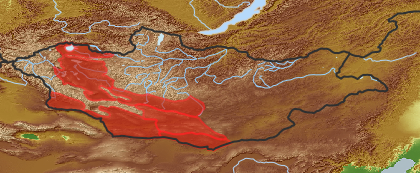 |
| Habitat: | Sands, parasitizes roots of Nitraria (Grubov 2001). |
| Habit (i)general appearance of a plant | |
| Growth form: (i)Herb, shrub, tree or climber. | herb (i)Herbaceous, erect plant, up to 2m high, mostly with a leafy shoot; if perennial, shoots die to the ground each season, shoots are not woody
example: Artemisia pectinata 
|
| Smell & Touch: (i)General appearance of the plant. | odor (i)Plant with an obvious scent
fragrant (i)Scent, which is pleasant
|
| Size of plant: (i)Attention: use flowering or fruiting specimens to assess plant height (many biennial plants possess only a basal rosette in the first year). | to 100 mm
from 100 mm to 250 mm
|
| Parasite status: (i)Is the plant a half- or full parasite? | Full parasite/ saprophyte (i)Full parasites without chlorophyll, entire plant lacking green color, often succulent
example: Cistanche  inherited by family Cynomoriaceae: Full parasite/ saprophyte inherited by family Cynomoriaceae: Full parasite/ saprophyte
Parasite/saprophyte (i)Plant not or not fully autonomous, leaves often without chlorophyll
example: Cuscuta, Corallorhiza, Epipogium (holomycotrophic)c  inherited by family Cynomoriaceae: Parasite/saprophyte inherited by family Cynomoriaceae: Parasite/saprophyte
|
| Water or terrestrial plant: (i)Where do the plants grow? | terrestrial (i)Plant grows on dry land
example: Orostachys spinosa  inherited by family Cynomoriaceae: terrestrial inherited by family Cynomoriaceae: terrestrial
|
| Leaf (i)expanded, usually photosynthetic organ of a plant (including phylloclades) | |
| Leaf development: (i)Structure and development of leaves. | without green leaves (i)Plant at flowering time (some geophytes) or over its whole life (many parasites) with reduced leaves without chlorophyll
example: Colchicum, Cuscuta, a lot of parasites
|
| Leaf arrangement: (i)Arrangement of leaves at the stem. | others ? (i)Not as above (soll gelöscht werden)
|
| Simple or divided leaves: (i)Are the leaves simple or completely divided in several parts? Blade of the leaf entire or (more or less) deeply dissected. Attention: There are various appearances of the leaf margin (from entire to toothed and lobed). Here, we ignore this and ask only for dissections that separate the leaf for more than one third of its length or width, whatever is smaller. Sometimes, it is difficult to tell apart compound leaves from a shoot system with simple leaves: look for stipulae and/or axillary buds at the ground of the leaves: if only some possess these structures, the others are most likely leaflets of a compound leaf. | simple (i)Non-divided leaf, but margin may be incised nearly to the ground 
|
| Shape of blade: (i)Easy for simple leaves. In compound leaves use the general shape of leaflet. Always check the ground for largest leaves of a plant. To be worked out: how to handle pinnate leaves? | scales (i)Short, broad and more or less adjacent to axis
example: Hypopitys, Orobanche, Ephedra 
|
| Length of leaves: (i)How long is the leaf, be carefull in compound leaves, measure the complete leaf. | to 5 mm
from 6 mm to 10 mm
from 11 mm to 20 mm
|
| Width of leaves: (i)How broad is the leaf, be carefull in compound leaves, measure the complete leaf. | 3-5 mm
5-10 mm
1-3 cm
|
| Leaf apex: (i)Appearance of the tip of leaf resp. leaflets in compound leaves. | acuminate (i)Gradually tapering to a (sharp) point
example: Populus laurifolia? 
|
| Leaf margin: (i)Structure of leaf margin (or that of a leaflet in case of compound leaves). Attention: Here we ask for the leaf margin, defined as all those dissections that separate the leaf for less than one third of its length or width, whatever is smaller. To be worked out: how to handle margin of pinnate leaves? | entire (i)Plain margin, not toothed
example: Iris 
|
| Leaf base: (i)The angle the leaf blade forms with a real or imaginary (sessile leaves) petiole. Attention: Here, we consider only the base of leaves or leaflets (in case of compound leaves). | broad (i)Angle 30° - 90°
example: Cotoneaster 
|
| Petiole: (i)Leaf divided into stalk (petiole) and blade. | base not surrounding stem (i)Leaf blade not sheathing but base can be semiamplexicaul
example: Veronica anagallis-aquatica, Euphrasia
without (i)Leaves without petiole (stalk), sessile
example: Poaceae, Iris 
|
| Stipule: (i)Leaflets at the base of the petiole, these are smaller and of different shape. | none (i)Without stipules
example: Euphorbia, Ericaceae s.l.
|
| Flower (i)reproductive portion of the plant, consisting of sepals, petals, stamens, and pistils | |
| Flower appearance and pollination: (i)General appearance of the flower. | attractive, animal-pollinated (i)attractive and coloured flowers, mostly large, attracting surely animals
example: Trollius, Rosa, Chamaerhodos
|
| Flower colour: (i)Attention: assess colour of the most colourful parts of the flower, but not of the stamens; be aware of single plants with a mutation (mostly white) on flower colour. | red (i)Reddish (also orange) to deep red
example: Lilium, Rhododendrum
purple to violet (i)All colors between purple and violet, often changing with flower age
example: Pulmonaria
|
| Perianth arrangement: (i)Attention: in some plants, flowers may be dimorphic in different ways (dioecious or gynodioecious). If flowers vary, record the characters of the most showy flowers. | simple, similar (i)Only one type of perianth leaves (tepals)
example: Tulipa 
|
| Diameter of flower: (i)Diameter of flower or flower head. | to 5 mm (i)
example: Aruncus
from 5 mm to 10 mm (i)
example: Stellaria
|
| Flower symmetry: (i)Symmetry of the perianth leaves. Attention: to assess this character, look on sepals, petals and stamens, but neglect carpels and ovary. | radiary, regular (actinomorphic) (i)More than two axis of symmetry
example: Saxifraga: 5; Iris: 3 
|
| Flower form: (i)common forms of flowers ? Veronica | simple (flat) - Do not confuse with inflorescences as in some Asteraceae (i)Petals spread out, flower appearing flat
example: Mollugo, Trientalis, Pulsatilla, Saxifraga 
tubular to funnel-shaped (i)Petals form a tube, are often partially united to a cylindrical corolla, often surrounded by a calyx 
|
| Petal / Tepal number: (i)Number of petal leaves (inner perianth leaves, usually coloured). | 4 (i)
example: Galium
5 (i)
example: Potentilla
6 (i)
example: Allium, Lilium, Dactylorhiza
|
| Spur: (i)A hollow, slender, sac-like appendage of the perianth leaves, storing nectar. | no spur (i)Flower without appendage
example: Peganum
|
| Stamen number: (i)Attention: We ask for the reproductive organs of the flower dispersing pollen. Count only fully fertile stamens, not staminodia (e.g. Parnassia). | 1 (i)
example: Orchis
|
| Stamen fusion: (i)To which degree are the stamens fused? Attention: Whereas the pollen sacs itself are often free., their stalks (filaments) may be fused. Here, we count them as fused if they are together over at least one thirth of their length. | free (i)Stamens with separate bases
example: Malus
|
| Pistil number: (i)Number of pistils (female floral organs: style, if developed; stigma and carpels/ovary together build the pistil). | 1 (i)One carpel, but clearly one stigma
example: Pyrola, Primula, Alyssum
|
| Carpel number: (i)Number of carpels (carpel: forming a simple pistil or part of a compound pistil, modified leaf). | 1
|
| Style number: (i)Portion of the pistil connecting the stigma to the ovary. | 1
|
| Ovary position: (i)For entirely or partly fused carpels, describe their position in relation to the insertion point of perianth leaves (best done by doing a longitudinal section of a flower). | inferior (i)Ovary below the point where perianth leaves are inserted, always fused to an ovary
example: Vaccinum  
|
| Sex: (i)Distribution of male and female organs among flowers, only most commonly cases. | bisexual, hermaphrodite (i)All or nearly all flowers of a plant with male and female parts
example: Haplophyllum, Chenopodium
unisexual (i)
example: Rhodiola
|
| Inflorescence (i)flowering part of a plant, describes the arrangement of the flowers on the flowering axis | |
| Inflorescence: (i)Structure of the inflorescence. | Flowers in inflorescence (i)No solitary flowers
|
| Appearance: (i)Outer look of the inflorescence. | terminal (i)Inflorescence is the highest point of the plant and may consist of a single flower only
example: Cypripedium, Rhaponticum, Ligularia sibirica, Echinops
|
| Inflorescence type: (i)Types of inflorescence. Attention: We here ask for the botanical nomenclature of inflorescences, which is sufficiently complicated. Tick only, if you are certain, or tick all inflorescence types that appear similar of these of the plant in question. | spike (spadix) (i)All flowers sessile and crowded along a main axis, there may be several spikes on a shoot; sometimes axis thickened (spadix)
example: Plantago, Carex vesicaria, Vicia, Typha (spadix)  
|
| Fruit (i)the seed bearing organ, with or without adnate parts; a ripened ovary and any other structures which are attached and ripen with it. Aggregate fruits are handled like simple fruits for determination. | |
| Consistency: (i)Fleshy fruits or dry fruits, see dispersal adaptations for further classification. | dry (i)With a dry outer shell, no fleshy parts, but seed (embryo) could be edible
|
| Type of fruit: (i)Common fruit types (including pseudocarp). | Indehiscent fruits
Solitary fruits (i)   
nut or nutlet (i)Dry fruit with a single, hard stone inside (and usually a large often edible embryo) 
|
| Opening of fruit: (i)Mode of dehiscence at maturity to release seeds. | not opening / indehiscent (i)Fruits remain closed at maturity and disperse with seeds inside
example: Corylus (nut), Vaccinium (berry)
|
| Seed number: (i)Estimate the number of seeds per fruit, if recognizable seeds are in the fruit (in rare cases a fruit may contain one seeded nuts: rose hip, carex). | 1 (i)A single seed (stone) or seed and fruit wall tightly connected
example: Prunus, Amygdalus: drupe
|
| Hairs | |
| Has hairs?: | no hairs, glabrous
|
| Root / shoot below ground (i)plant part below ground (in most cases), including below ground shoots, without leaves | |
| Root type: (i)Organisation of the roots. | allorhizous (i)Plant with a conspicuous tap root, one larger tap root with side roots
example: Dicotyledonae  inherited by order Saxifragales: allorhizous inherited by order Saxifragales: allorhizous
|
| Distribution (i)region where the plant is likely to be found | |
| Distribution (Veg. Zones): (i)acc. to Grubov 1952 | Depression of Great Lakes (i)In distribution data often named as '10' 
Valley of Lakes (i)In distribution data often named as '11' 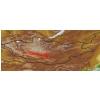
Gobi-Altai (i)In distribution data often named as '13' 
Dzungarian Gobi (i)In distribution data often named as '14' 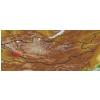
Transaltai Gobi (i)In distribution data often named as '15' 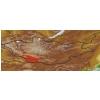
Alashan Gobi (i)In distribution data often named as '16' 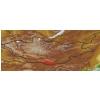
|
| Plant Use | |
| General Use: | medical plant
other
|
| Plant Status | |
| Red list status: (i)Rare Mongolian plants | rare (Shiirevdamba 2007) (i)Rare plant
|